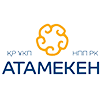Since January 1, 2020, all entities operating in the field of oil and gas condensate production and turnover that have not equipped their enterprises with control and metering devices will not be able to operate in Kazakhstan. This is stated in Article 144 of the Law “On Subsoil and Subsoil Use”. The Oil and Gas Industry Strategic Partnerships Development Council (Petrocouncil) asked Alan Aralbayev, Director of the Department of Digitalization and Public Services of the Ministry of Energy of the Republic of Kazakhstan, to explain what Information System of Crude Oil and Gas CondensateAccounting is and why it is needed.
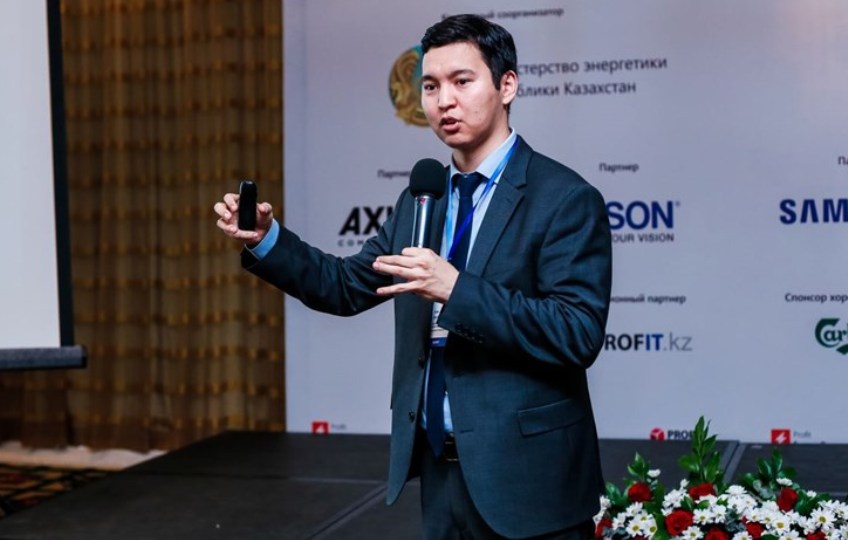
Less than six months are left before the introduction of one of the largest innovations of the Ministry of Energy in recent years – the Information System of Crude Oil and Gas Condensate Accounting (ISOA). According to the new Code, mining, transportation and processing companies must equip their infrastructure with oil control and metering devices and automatically transmit this data online (once every 24 hours) to the information system of the Ministry of Energy. The task of ISOA is to automate the daily collection, processing, storage and use of data on the amount of crude oil and gas condensate in circulation, prepared for delivery to the consumer.
How will the ISOA work
The history of digitalization of the accounting process of produced and sold oil began in 2013. At that time, the General Prosecutor’s Office of the Republic of Kazakhstansent to the Prime Minister of the Republic of Kazakhstan a proposal to create an information system of oil accounting (ISOA) and improve legislation in order to combat shadow oil turnover in Kazakhstan. Since then, two reporting systems have been formed – JSC Information and Analytical Center of Oil and Gas (IACOG) and the Web Portal Unified State System for Subsoil Use Management (USSSUM) (Fig.1). Both systems involved manual data entry and eventually there were data discrepancies, and sometimes there were amusing incidents – the data showed that a huge enterprise’s production was 0 barrels per day. Both systems lacked reporting on crude (non-commercial) oil and did not provide for the possibility of an operational comprehensive cross-analysis of the material balances of commercial and crude oil for each subject of the industry.
|
Web Portal Unified State System for Subsoil Use Management(USSSUM) – More than 47 reports on crude hydrocarbons, solid minerals and ground water (except common commercial minerals and energy) – Quantitative indicators: daily, monthly and annual production,transportation, processing, production plans for commercial oil – Qualitative indicators: performance of licensing and contractual conditions – Data is entered manually in online forms – Data analysis is currently carried out occasionally |
JSC Information and Analytical Center of Oil and Gas (IACOG) – Reporting only on crude hydrocarbons – Quantitative indicators: daily, monthly and annual production,transportation, processing, production plans for commercial oil – Data is entered manually and sent by e-mail – Data analysis is conducted on a regular basis |
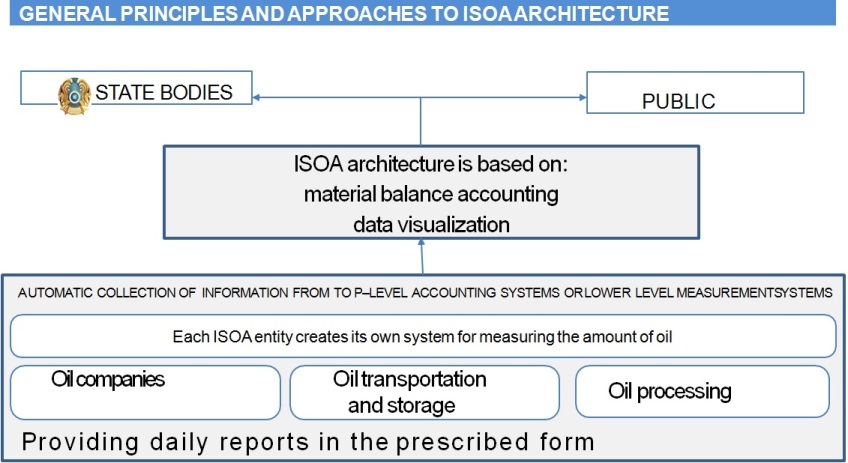
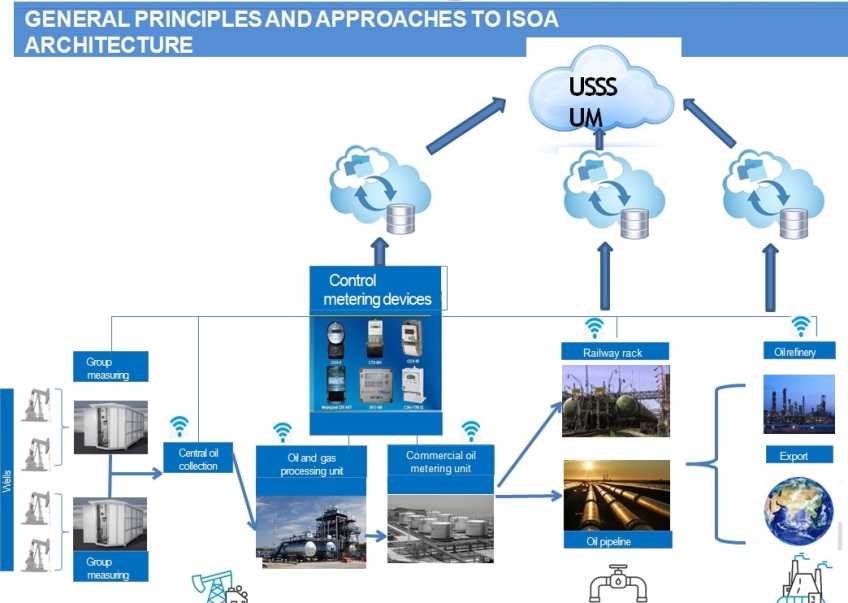
Terms of installation of the equipment were shifted, however, the coverage of all costs for the installation of equipment remained the responsibility of subsoil users. The Ministry of Energy decided not to limit companies in the choice of equipment. Each subsoil user decides from whom to purchase sensors and data integration systems. It is only important to remember that until January 1, 2021, all 22 thousand wells and 100 commercial oil metering stations in Kazakhstan should be equipped with metering devices.
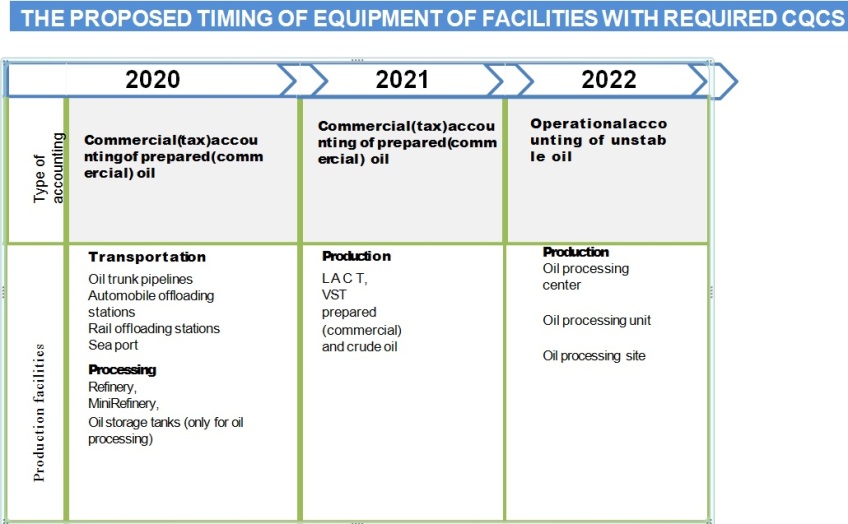
The appearance of the new report will look something like this and should be sent in XML format. Since the report is still in the process of development, the Ministry of Energy encourages to make proposals on what data should be necessarily included in the document.
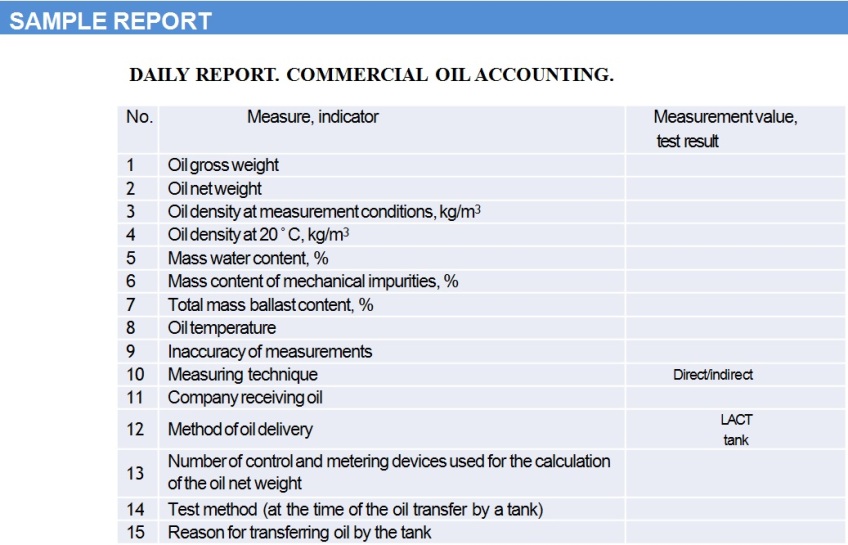
Other innovation
In addition to ISOA, the Ministry of Energy is developing other innovations that should change the processes in the industry. For example, two refineries have already implemented a monitoring system that uses sensors to monitor the technical condition of the equipment and offers the best time to start repair works. If earlier the plant had to stop every year for repair, now the sensors will tell you whether the equipment has worn out and whether it should be changed. KazMunayGas network of gas stations introduced a system of contactless gas stations, which allows the motorist to pay for fuel in the phone application, and not to leave the car at the gas station. The Ministry of Energy together with the Asian Development Bank plans in the nearest future to develop the concept of a smart grid that will track data on renewable energy production.
Photo: profit.kz

